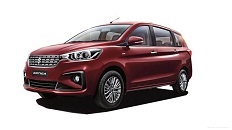Six years and 4.25 lakh sales, Maruti has launched the second-generation of this MPV. Maruti has stopped the production of the first-gen Ertiga which has been a big success due to its easy-to-drive character, compact dimensions, the versatility of seven seats, and efficient engines with an option for CNG fuel. And while the car itself was very competent, its aggressive pricing and Maruti’s widespread support network played like a catalysts to this success. It sees an increase in its dimensions, space, fuel efficiency, and overall premium feel. Maruti Suzuki #NextGenErtiga in a completely new avatar! Aspirational Design, Enhanced Comfort and Superior Performance
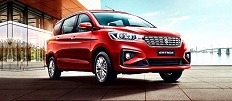
EXTERIOR
Built on the lighter, fifth-generation Heartect platform that underpins other Maruti cars like Baleno, Swift, Dzire, and Ignis, the new Ertiga diesel sees a 20kg drop in its overall kerb weight; the petrol, however, stays near identical due to the larger engine and additional battery pack. The new car is 99mm longer, 40mm wider and 5mm taller than before, but it retains the same 2,740mm wheelbase.
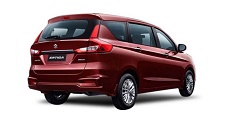
The new Ertiga features a more contemporary styling that makes it look far more desirable. The swept-back projector headlamps, the attractive chrome-studded grille, and its flattish bonnet might remind you of the Toyota Innova Crysta or Mahindra Marazzo at first glance, but there are several smaller elements that give it a distinct identity. The side profile is amply fresh with a new chiselled waistline, chrome door handles and multi-spoke wheels, and the blacked-out D-pillar lends a floating roof-like appearance. Further adding to the car's appeal are the stretched-out LED tail-lamps that look like they belong on a Volvo.

INTERIOR
The new interiors are an evolution of the outgoing version. There is an air of familiarity here because several bits like the flat-bottom steering, instrument cluster, gear lever, touchscreen, knobs, and controls are shared with other Marutis. The dashboard is split by an artificial wooden finish on the Z and Z+ variants, which does look, well, artificial. However, the dummy air vent running across the breadth of the dash, inspired by the new Audis, looks quite good, while the actual vents feel more premium than before. There is a lot more to like in the cabin, like the ease of ingress-egress thanks to the Ertiga is tall stance and wide-opening doors. The front seats are larger, more supportive and very comfortable thanks to the soft cushioning. A new sliding front armrest adds to the driving comfort too.
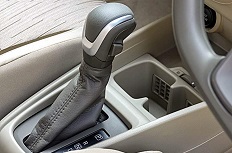
Space inside has been enhanced a fair bit. The second row still gets recline and fore-aft adjustment in a 40:60 rati, and the humongous window and tall ceiling add to the sense of space here. The third passenger would be a touch comfier here now, thanks to the increased shoulder room. Further adding to the comfort is a dedicated roof-mounted blower with four fan speeds, just like the outgoing car.
The third row accessing has been made easier by the one-touch mechanism to slide forward the middle row. It does not flip forward like in the Marazzo but there is enough to space to clamber in without much difficulty. What is impressive is that even adults can sit here without feeling too cramped, and what also frees them of the claustrophobic feeling – usually experienced in the last row of many seven-seaters – is the massive quarter glass. Crucially, this row now gets a recline function for more comfort; taller occupants, however, will find their heads brushing against the sloping roofline, in the reclined position.
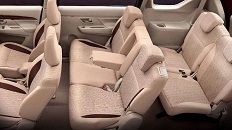
Lot of new features like a new front armrest console, segment-first cooled cupholders, bottle holders in each door, and charging outlets in each row – these should have been the modern USB chargers, rather than the old 12V sockets, though. Boot space is now at a much larger 209 litres, but can be further expanded to 550 litres and 803 litres by folding the seats. There’s even a useful storage area beneath the boot floor to stow items out of sight.
DRIVING ERTIGA
Ertiga is powered by a brand-new K15 1462cc petrol engine that debuted in the facelifted Ciaz. Power has been bumped up to 105hp and torque to 138Nm – a healthy increase of 13hp and 8Nm over the 1.4-litre unit that it replaces. Just like in the Ciaz, this motor features a mild-hybrid system which gets support from two batteries. Apart from the regular battery, there’s one lithium-ion pack placed under the passenger seat, which provides a small amount of additional boost to the petrol engine. In the real world though, the battery boost is negligible, and it’s only when the graphics on the MID displays the transfer of power that you know the mild hybrid system is working. The energy recouped when the car decelerates, is used to recharge this lithium-ion battery. Another feature of this hybrid system is the engine start-stop system that works seamlessly in stop-go traffic; most, however, would turn this feature off, especially during summer, because it cuts off the air-con compressor, leaving only the blower running.
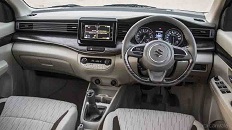
The new 1.5-litre petrol’s character is near identical to the 1.4-litre unit it replaces – this means it is smooth and very refined. Driving in the city, it performs effortlessly with adequate power available at lower revs. It gets off the line easily and is quick to respond initially. However, demand a quick overtake and it does warrant a shift to a lower gear and needs to be spun harder. The mid-range is flat and so is the top end, with no noticeable spike in the powerband. It gets noisy beyond 3,500rpm, and even though it can spin all the way until 6,200rpm, progress at higher revs is slow and the engine tends to sound strained. However, as long as you’re not in a hurry, the petrol will impress you with its smoothness, refinement, and efficiency, which is claimed at 19.34kpl for the 5-speed MT and 18.69kpl for the 4-speed AT, an improvement of 1.84kpl and 1.66kpl, respectively.
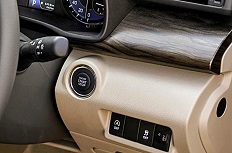
Ertiga petrol-automatic is a rather old-school, 4-speed torque converter, with the first three gears being driving gears and the fourth being an overdrive gear to maximise efficiency. This unit is smooth in its operation and it will shift to the highest gear at the earliest to consume lesser fuel. However, the slightest of inputs to the accelerator while cruising and it will need to drop down a gear to get moving. To combat this constant shifting while cruising, there’s an overdrive off button which will keep the car in the first three gears only, thus keeping the engine on the boil. There’s no manual mode but there’s a Low mode which keeps it in the lowest possible gear, useful for uphill sections of road. Only the auto gets ESP and hill-hold.
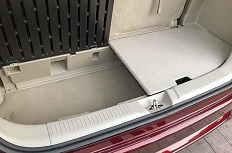
Diesel variant Ertiga gets the old, tried-and-tested 1.3-litre Fiat-sourced engine producing 90hp and 200Nm, but what’s good is that fuel efficiency has increased to 25.47kpl (0.95kpl more than before). However, this engine is too loud and clattery while idling and accelerating. Turbo lag still persists below 2,000rpm, and the engine feels dead. Speedbreakers will need to be tackled in first gear and being a smaller-capacity engine, drivers will need to work the gears to build speed briskly, especially while lugging a full load. When spun harder, though, there’s a strong wave of torque that pulls the car forward rather energetically. It’s a free-revving motor and it spins all the way until 5,100rpm, but boost comes in strongest between 2,100 and 4,500rpm, after which it tapers off. The 5-speed manual gearbox is slick with short throws, and the clutch has a short travel and isn’t too heavy either.
The new Ertiga performs exceptionally. It rounds off bumps and bad roads competently, and body shocks hardly filter into the cabin. Even at speeds, there’s a newfound planted feel, and vertical movements are barely noticeable, making it more comfortable while cruising on the highway. The Ertiga handles like a tall hatchback, so while there is some roll, it can be driven with enthusiasm around corners with confidence. The steering is adequately weighted and remains predictable at all times.
SHOULD I BUY ERTIGA?
Maruti has taken the very competent first-gen Ertiga and made it even better. It offers everything that buyers are looking for – space, comfort, value, and desirability. The inclusion of new features and the added interior room make it more practical now, while its ride quality and improved seat comfort further enhance the overall experience.
The new petrol engine, though refined and smooth, misses zing. And those looking for a petrol- automatic will have to give up on having a touchscreen, as it isn’t available in the top-spec variant. Then, there’s the diesel engine which is noisy and unrefined. Moreover, it is priced at a huge premium of Rs 1.40 lakh over the petrol.
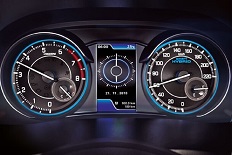
Maruti Suzuki #NextGenErtiga in a completely new avatar! Aspirational Design, Enhanced Comfort and Superior Performance. However, despite being a big step up over the older car, its price is still far lower than its competition. So for someone looking for a practical, value-for-money seven-seater MPV, this new Ertiga is simply the best option available.
